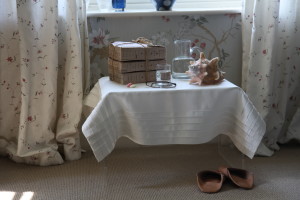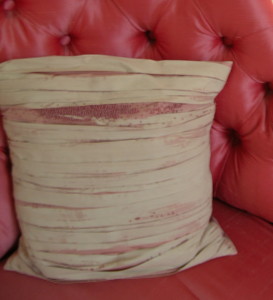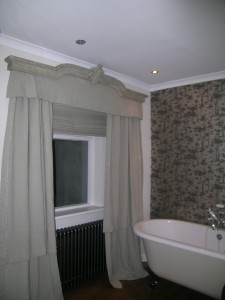Pleating happens when flat fabric is folded back on itself repeatedly, or with at least two folds.
Pleats that cross over create an extra, sculptural, dimension to plain linen
* Pleats come in a variety of sizes and widths, with each pleat requiring at least three times its measurement in unpleated material.
* Only synthetic materials can be made into permanent pleats
* Pleats in any material will stay as long as the fabric is washed at a lower temperature than that used to create the pleat.
* To make pleats yourself press them in with the hottest possible dry iron, then with steam, taking care to protect the surface from any iron marks from the folds beneath.
* After gentle laundering, pleats should fall back into place, the sharp edges re-defined with a light pressing: even so, for any furnishing requiring regular laundering, it’s best to buy permanently pleated fabrics.
* Pleated fabrics tend to be used for lightweight curtains, though skilled upholsterers might suggest sunray or accordion pleats for chair backs, four-poster beds, half testers and canopy tops.
* Pleated flounces add a light-humoured finish to cushions, lampshades, or the hems of curtains and swags.
* The most famous pleating was created by Italian fashion designer Mario Fortuny in the 20thC, characteristic multi pleating set in silk, which technique remains a legendary mysterious secret. Innovative designer Kenzo has revived the idea of pleated dresses, trousers and tops with his ‘pleats please’ wear, lovely plain pleated fabrics and printed in highly exuberant patterns and plaids.
* Pleats are generally categorised formally as knife pleats – a single fold; box pleats- double folds that meet each other in the centre; tapered box pleats- these start off narrower at the top and then widen out; kick pleats – these are in fgeect box pleats but large enough to kick out at the base.
* Pintucks are a type of pleat, made in the same way, but not pressed flat.
Pleating doesn’t need to be formal and straight – the idea can be re-interpreted as you wish; this one came from couture influence.
Informal pleats soften…



